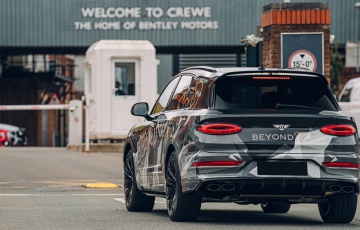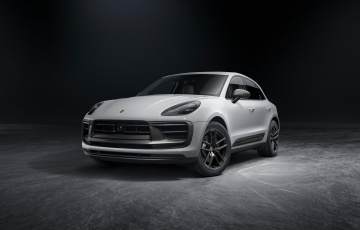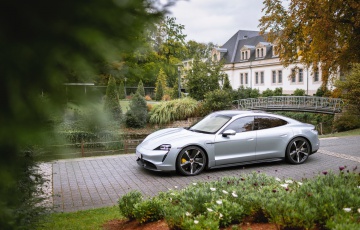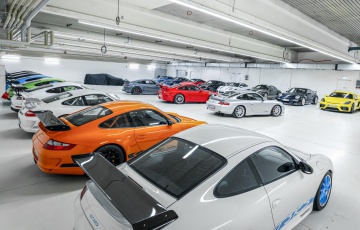What's the new turbo 911 Carrera like? We take a passenger ride
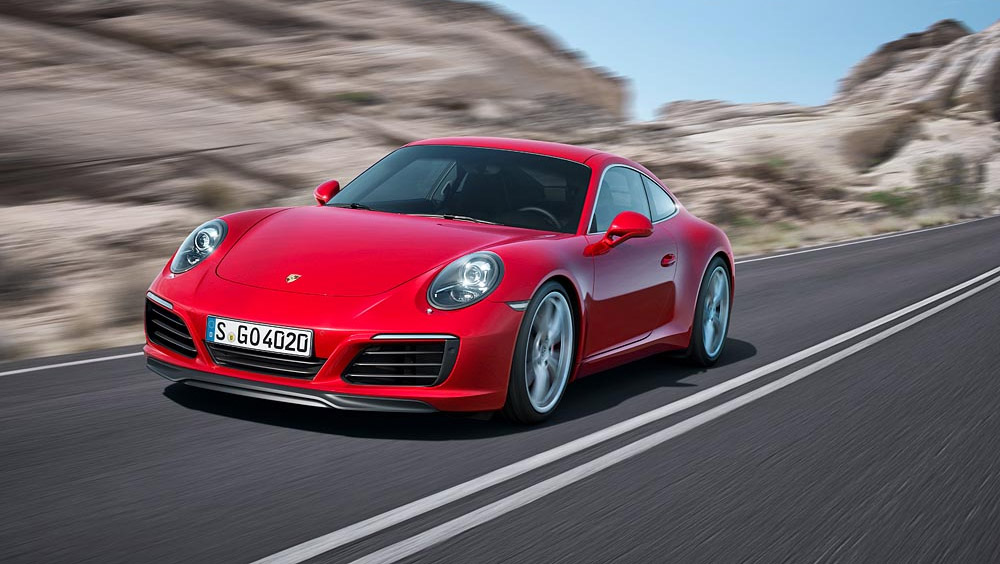
I'm on the hunt for the Porsche 911's new turbos. They've got to be in here somewhere, tucked in some out-of-the-way corner of this cutaway car.

The engine bay is a mass of wiring and pipework, but finally, tucked down by the rear wheel, hidden just the other side of the wheelarch liner, I spy one. It looks small and innocuous, hardly a component to cause so much controversy.

The addition of a pair of turbos to the until-now naturally aspirated Porsche 911 is perhaps the most controversial development in the rear-engined sportscar's 52 year history.
Yes, turbos may be good for power and economy, but they are traditionally not good at the things that matter to us: engine noise and response, power delivery, crispness, high rev excitement.

That's why we're here, of course, so Porsche can attempt to convince us otherwise. 'Here' is Hockenheim, and 'what' is a passenger ride in the new 911 ahead of the car's debut at the Frankfurt show next week.
You probably already know the headline figures, but just in case you missed our recent news story or can't be bothered to click through to it, here's a quick recap.

There are Carrera and Carrera S models. The basic engines are identical ' a 3.0-litre flat six that's new from the ground up, with a turbo per bank.
The standard car develops 370hp, and the S 430hp. These are gains of 20hp over the outgoing 3.4 and 3.8-litre naturally aspirated motors, while torque has climbed 60Nm in both instances, to 450 and 500Nm respectively, now available in a thick wodge from 1700rpm to 5000rpm.

Given the precision of these power increases, you'd be forgiven for thinking a twist of the special ECU screw is the sole difference that separates Carrera from S. Not so.
There is an electronic tweak, but each also has a unique exhaust system and Borg Warner compressor turbine. In the Carrera it's a 49mm diameter compressor that runs 0.9 bar, while the Carrera S has a 51mm compressor that runs 1.1 bar.

Outside sit a handful of well-used development prototypes. Mine has been roughly sprayed black, has no lettering on the rump (it looks oddly naked without the name picked out) and inside sports a half cage and the meanest, biggest bucket seat this side of a DTM grid.
It's one of the Nurburgring chassis development cars. It ought to be utterly shagged. It has PDK and the optional sports exhaust, but regular steel brakes.

My chauffeur is Arnd Meyer. He used to work for AMG developing the Black Series cars, but moved to Porsche a couple of years ago. He's properly laid back, and guides the car around at immense velocities with one hand while barely being able to see out from under a tightly pulled down baseball cap.
The 911's sports exhaust is important, and not just because it's slightly separated central exit pipes remind me of a VW Beetle. I doubt it's any coincidence that all the cars here bar one are so fitted.
We pull to the end of the pitlane, I hop out and Arnd guns the engine. It sounds familiarly flat six-ish, but perhaps a bit plain.
He presses the sports exhaust button and ' yep, that's more like it. Guttural and raucous. Pretty convincing.

The noise is good from inside, too. There's no electronic enhancement, but there is a pipe that runs from the inlet ducts through the rear bulkhead and along behind the rear seats to enhance the noise. It works.
Close your eyes and you couldn't be in anything other than a 911, but there is a slight softness to the sound that doesn't quite prickle your nape. But we're used to turbos killing sound, and here they don't. Sounds better than any 911 Turbo I've driven.

Speaking of the Turbo, you might be wondering how Porsche intends to separate regular 911s from big 'T' Turbo ones from now on. Two ways: one they talked about when asked, and one they would only hint at.
Firstly, these new standard 911s have monoscroll turbos, while the Turbo already has variable vane geometry. Secondly, that 3.0-litre capacity is expandable through the familiar Porsche trick of extending the cylinder stroke (it's what makes the GT3 RS a 4.0 when the standard GT3 is a 3.8).
Maybe stretch this new unit out to a 3.6 (that was the capacity of the iconic 993 Turbo) with beefier blowers and, say, 600hp'

We're doing hot laps, Arnd lapping one-handed at vicious speeds and showing the brakes utterly no mercy. Considering its 'Ring providence this car's held up very well indeed. And above 5000rpm, where the Variocam has opened up, it sings its heart out, revving only 300rpm less than the nat-asp motor (7500rpm plays 7800rpm).
The response seems good. Arnd occasionally likes to stab several times at the throttle through corners and, each time he does, there's a response from the chassis. With a turbo you'd expect the lag to get in the way of response, but maybe not here.

I later learn Porsche's trick for enhancing engine response. They back the spark timing off to push more air out of the cylinders in the split second your foot starts to press the throttle. This spools the turbos up fast, then the spark timing can be brought back forward.
I have a ride in a Carrera S as well. That feels bigger-chested, but more turbocharged. On this evidence I think I prefer the 370hp version.

Out on the track we do a slower lap. Down to below 2000rpm in third and clog it. The 911 Carrera pulls healthily, bit of turbo whistle, decent shove, but the consistency of the delivery means it feels a bit flat through the mid-range until it hits the heights above 5,000rpm.
And that's the thing. It may be faster, it may be more efficient, but on a passenger seat impression the turbo 911 doesn't quite have the sparkle, the clarity and connection of the old motor.

It seems close though. Really close. I'm trying to think of any firms that might have done turbos better. Porsche themselves haven't.
AMG Mercs perhaps? The Ferrari California's motor is the most impressive thing about it. Latest McLaren 675 LT is pretty off the scale, too. Short list, though...
STORY Ollie Kew






